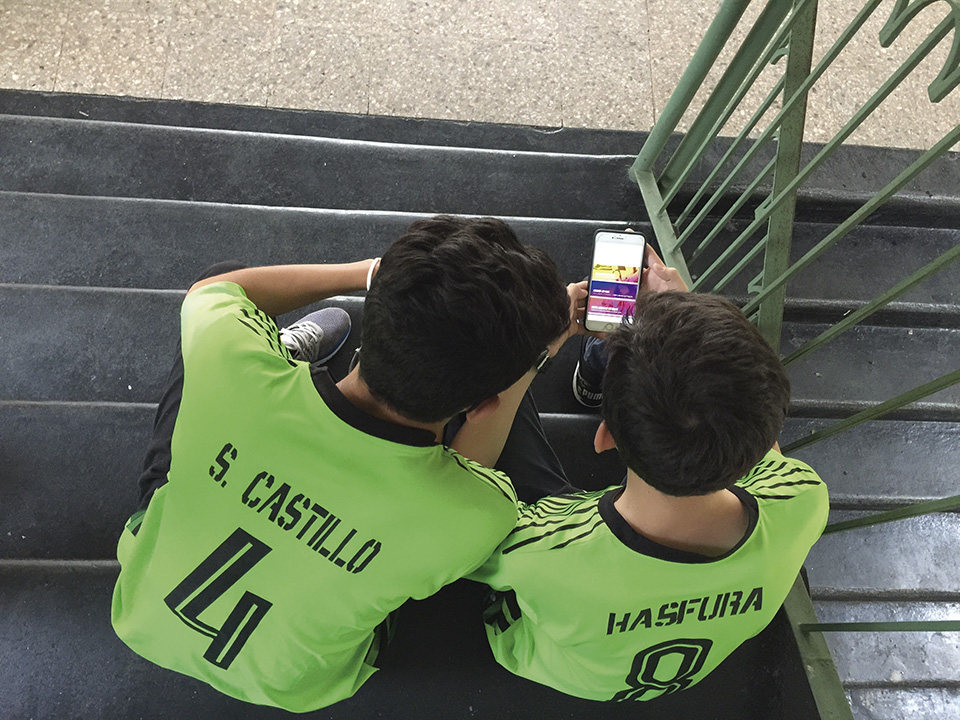The challenge, in the digital world, is to reach everyone, but especially young people. Social networks and messaging services are no longer a game or a pastime; they are part of our daily lives and shape our way of approaching life more than we think. Several apostolic initiatives have already arisen along these lines: texts from the Gospel, the Fathers of the Church or authors of spirituality; web pages, channels of podcastnetworks; networks of WhatsApp for distribution of Christian content, etc.
But the challenge still remains: to get young people hooked on these kinds of initiatives, or better yet, for them to influence the lifestyle they lead, both inside and outside the digital world.
The horizon for young people
This is a common theme in conversations between priests who work directly with young people and adolescents: how to get them to engage with Jesus in a permanent way and not just for two or three days after a touching experience? Why not approach the spiritual life with sportsmanship, as even St. Paul himself did, or as an application of fitness or transcendental meditation?
This is what led me to develop an application that would help young people and teenagers to engage with Jesus through personal prayer. Before studying theology, I had studied electronics engineering and computer science. So, I dusted off my programming skills, and threw myself in my spare time into developing the app LinkBFF.
The name was suggested to me by a group of young people after explaining the concept of the application I would develop. On the one hand, we wanted a fresher image, that would come out of the stereotype that people have of confessional applications; and on the other hand, we wanted it to be about LinkBFF that could keep up with productivity, sports, etc. applications. The name LinkBFF refers to two concepts. On the one hand, the need to connect (link) with Jesus; and on the other hand, to discover that Jesus is really the best friend (BFF), Best Friend Foreverbest friend forever).
The best friend
Behind the acronyms BFF there is a lot to cut through. It turns out that today, due to the family crisis, many young people grow up in dysfunctional homes, or with parents absent for work or whatever reason. The figure of the "best friend" has begun, then, to take special strength. Young people and adolescents need to feel that they can count on an affective support for making decisions, new experiences, mistakes, etc. From this arises the figure of the "best friend" to whom they entrust their personal things, to the point that in order not to lose him or her, they do not usually choose him or her as a boyfriend or girlfriend for a future marriage. The figure of the "best friend" has become an almost sacred entity for young people and adolescents. This is someone who understands me, comforts me, listens to me, does not judge me, and loves me as I am. Problems arise when the "best friend" betrays, disappoints, or makes things worse rather than better.
Objective, to help to pray
The application LinkBFF has set itself the goal of helping young people discover that their true best friend is Jesus, a best friend to be discovered through personal prayer.
Thank God, there are already numerous authors who have made excellent proposals for young people to connect with Jesus. The one that I found most suggestive was that of a Spanish author named Juan Jolín, who came up with a small book titled 3+2. The book consisted of brief commentaries on the gospel of the day, which is read in three minutes; and two minutes for silence (hence the name "silence"). 3+2). In the end, the book 3+2 followed the methodology of the lectio divinawhich has borne so much fruit throughout history. The bad thing was that as the book 3+2 was a periodical publication, to reach many people requires an effort that, personally, I was not able to carry out. So I decided to take the methodology of the 3+2 to an application and... surprise! The idea worked.
Before reaching the current version of LinkBFFI was able to count on the advice of professionals in graphic design, marketing, brand image and audiovisuals. There is no doubt that in the task of evangelization it is necessary that the sciences related to communication take part.
Hook
LinkBFF has been well received. The brief commentaries on the Gospel in youthful language are engaging; they not only comment on the text, but also suggest to the user what their conversation with Jesus might be like. Along with these texts, the application also provides some other tools, such as an area to keep track of a life plan or spiritual direction. This, to make it clear that without a long-term project and constancy, it is not possible to find that true best friend we long for.
LinkBFF is available at Android y iOSand it is possible to download it on the vast majority of device models. It takes up little space, so that it does not clash with other applications, quite heavy, such as video games or messaging. It is currently available in three languages: English, French and Spanish. In addition, since a few months ago, it has links to audios elaborated by priests, such as 10min with JesusLuis Zazano's comments.
Personally, I love suggestions; especially when they come from young people. Several have written suggesting to add content or changes that would make the application easier to use.
Chaplain of the Citalá School (El Salvador)











